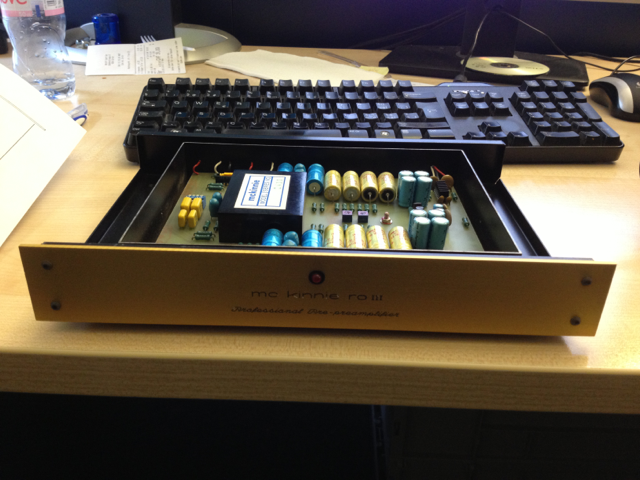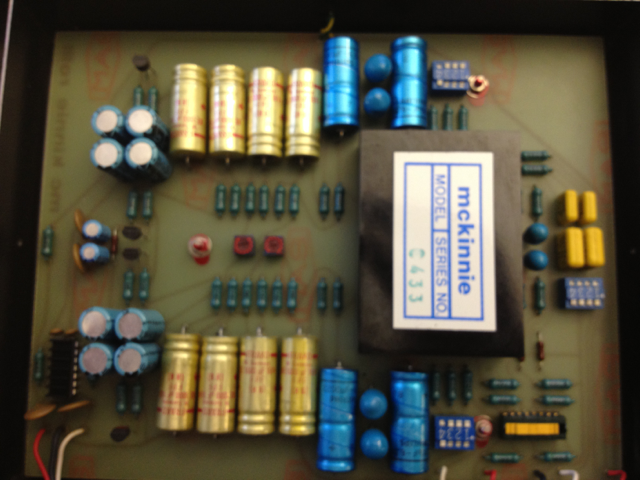Arkless Electronics
Trade: Amp design and repairs.
Not fair - text only
Mine is a McKinnie RO III - local Swiss product by an engineer that used to work for John Curl - it's a clone of his Vendetta SCP design, and very nice it is too. I need to recap it at some point I suppose, but it sounds excellent as is. Design is also JFET based, the originator of yours probably
I built a DIY SUT based on Beyer Dynamics xers that I was using previously - it was very good already, but after reselling an earlier McKinnie I got as part of a turntable purchase without listening to it (and before realising what it really was), I took a punt on this when it came up - very glad I did.


Richard
As the subject of head amps has come up I hope I can be allowed the indulgence of pointing out that I do actually make an up market head amp (and very good it is if I say so myself

